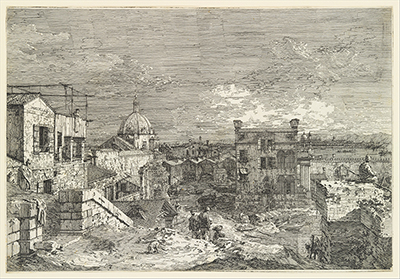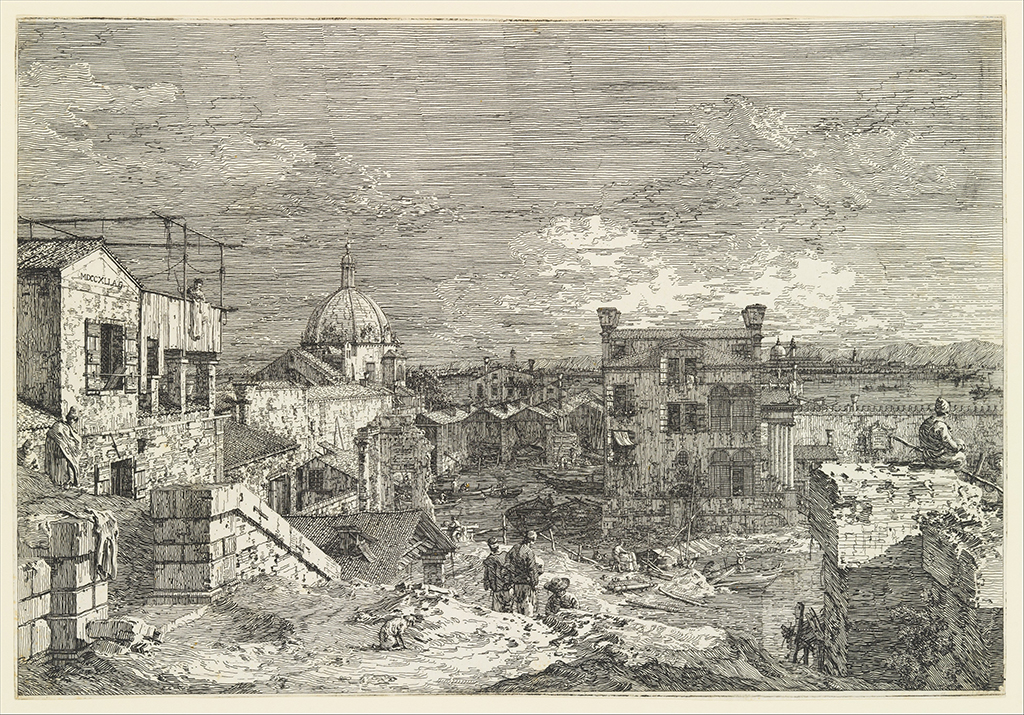Etching is an art form which proved particularly popular within Venice during the 18th century and Canaletto was at the forefront of that, most notably with a series of 30 etchings which arrived between the years of 1740-45.
This was an artist renowned for the extraordinary level of detail that he used within his cityscapes, making his approach ideal for this highly technical medium. Whilst in the present day the techniques of etching are practiced rarely, the medium used to be fairly popular in previous centuries and promoted by some of the most famous artists in history. Besides Canaletto, the likes of Goya, Zorn, Rembrandt and Durer were all passionate about creating all manner of different content using these traditional techniques. It is seen by many today as more of a niche topic as compared to painting and sculpture, but it is possible that this situation might be reversed in the future as fashionable tastes are always likely to change over time.
Canaletto was an artist who produced scenes from reality and also from his own imagination and we do know that his famous series of etchings made use of both sources of inspiration. He would have realised that print reproductions produced from these original etchings could be used to make an additional income stream and help to support their careers. Some etchers have used these printed artworks as a way to spread their reputations further too, be it by attracting poorer elements of society who were now able to afford these items, or alternatively by the way in which these prints could travel further afield, allowing the likes of Canaletto to become known in other parts of the continent.
"All the youthful vigour has returned, the freedom of fancy and line, all the imagination and invention that material success had whittled away. The verticals no longer betray the draughtsman's T-Square, the figures are real people once more, not just short-hand blobs put in to prevent the places looking deserted. New disciplines and techniques demanded a new eye, a new approach to problems of light and shade. Canaletto was himself again".
Viscount Norwich, describing Canaletto's experience in switching to etching
The artist reached a point in his career where demand for his services had reached extraordinary levels that he was simply unable to satisfy. As someone who would put such hard work into each and every painting, it was impossible for him to suddenly increase his output of work, as more commission requests arrived. Some have suggested that this pressure eventually led to the artist subconsciously dumbing-down his work in order to take on more projects, and perhaps some of his original magic was missing from later work. Perhaps he viewed etching as a method to satisfying this demand but without drawing in the type of criticism that would later come his way. Venice itself was a city with a famous reputation across Europe and Canaletto himself was known as the best artist for capturing the location's charms.
Joseph Smith, a patron of the artist during the 1740s had already commissioned Antonio Visentini to produce a series of Venetian etchings for him and was no pleased with the results that he then asked his favoured artist, Canaletto, to consider switching from his normal pursuit of painting to construct a further series of scenes of the great city. Smith himself was later appointed Consul to Venice, underlining the wealth and power that he had at his finger tips. Canaletto's increased interest from English patrons eventually persuaded him to move to the UK and seek out new sources of inspiration. By that point, perhaps he felt he had made as much of Venice as he possibly could do and required alternative inspirations. His existing connections may well have even invited him over in order to get him involved in domestic projects.
Etching itself is a slightly complex method that involves using a needle to make strokes which remove elements of a varnish before the item is then put into acid that creates the final imprint, once the remaining cover is removed. One would need specialist equipment in order to produce items such as these, which therefore requires somewhat of an initial investment before one can be sure as to whether they will continue to work like this - perhaps that is why the art form slowly died out over previous centuries but many will stick take the opportunity to try it out in more communal settings such as art classes, where all of the equipment has already been provided.





